#terrafugia
Text
Flying cars ... AGAIN!
Next candidate!
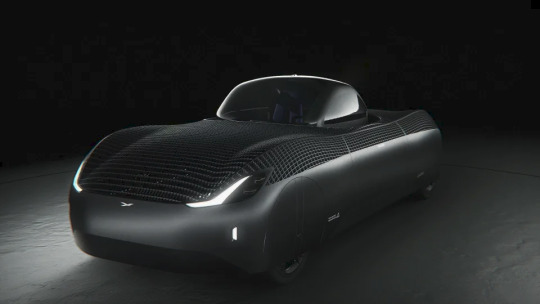
I love it. This is such a total scam and it gets full news coverage. I pulled this image off of the Yahoo front page today. The "manufacturer" has permission to test it from the FAA. By that keep it away from any stuff it may fall on and have fun. Oh and the test is not actually the thing you see in the nice pictures, but a "prototype."
The company has a website. Alef Aeronautics, google it. Oh and they are hiring interns, you know the people who don't get paid.
Why is it a scam? Hey its better than call center fraud for sure. First clue is all the images are computer renderings. I like this one here:

That's what I call sight seeing! Very nice. Almost as good as the Ehang flying over the alps in that video years ago. There is a prototype somewhere, but curiously no photos. Hmmm.
So lets cut this one up. The Yahoo item had a Skype interview with the designer/engineer/poser who was wearing sunglasses indoors and had long flowing locks of hair. He bragged about how efficient that the car could travel on the ground for 200 miles or in the air for 100 miles. All for only $300,000! It will be certified as a car and as a plane. No office or engineering suite in the view, just a bedroom door by the looks of it. No shop to build even a model.
A real company would tour the shop floor at the very least.
The concept is easy to say, but impossible to do. The image gives you all you need. First is the top surface of the car is some kind of mesh. That is a good idea to protect everyone from the whirling blades of death. But in horizontal flight it is a huge source of drag as the intent is to fly mesh side forward so that the sides of the car acts as wings and provide the lift for more efficient flight. The mesh will prevent that from working, sorry. I guess hiring an aerodynamics engineer is too expensive and they are so negative!
Next issue is car regulations require crash protection and all sorts of safety impact stuff. Aircraft need only to be light. From the image there is none of that safety stuff. Would it survive even the most basic collision test for a car? No hope of that I bet. And don't go claim some carbon fiber breakthrough will make that happen. I work in composite engineering.
Oh there is more. Where are the batteries? In every electric car there are tons of batteries. Big heavy and bulky they are. Oh just leave that out of the picture for now. Just one more breakthrough.
I love that the tires are just hanging there and who needs a suspension that is so limiting.
That tiny passenger pod thing in the middle is really small. It looks to be much smaller than a Smart Car:

This is a real car that does pass safety requirements and weighs more than a Cessna 172 airplane. I holds two people if they are good friends and maybe a couple of grocery bags. For comparison the Cessna has a 140 hp motor and 36 foot wings. The Smart car I recall had a 50 hp motor.
There is a very small licensed Helicopter called a Robinson 22. It does take off and land vertically with 130 hp and weighs slightly less than a smart car.
Flying cars have been touted for decades. I mean lots of decades. Very clever people have tried (even geniuses) and millions of dollars invested, spent and lost.
The long hair dude will probably walk away with some good cash.
The people who built the one below actually had a thing that flew and could go on a road if you ignored those safety regs.

Terrafugia from 2012 ish. Sold the company to a Chinese vulture firm and make drones now.
The future is an endless chain of scams.
0 notes
Text
El sueño de volar
Los sueños de volar algún día se harán realidad con los vehículos aéreos eléctricos de pasajeros. Desde Ícaro desafiando al sol con alas de cera hasta los Wright elevándose sobre Kitty Hawk, la humanidad ha estado obsesionada con surcar los cielos. Ahora, disruptivas startups prometen llevar esa fantasía a nuestras ciudades con taxis aéreos autónomos. Pero mientras visionarios como Lilium y Joby Aviation buscan que despeguemos hacia los suburbios, los autos eléctricos terrestres como los de Tesla ya recorren velozmente las carreteras. ¿Podrán los vehículos voladores personales sortear obstáculos regulatorios y de infraestructura para materializar su potencial? ¿O el futuro de la movilidad eléctrica seguirá atado al asfalto? Revisemos el panorama.

Los humanos han soñado con volar desde la antigüedad. Los primeros esfuerzos se centraron en emular el vuelo de las aves con alas artificiales. En el siglo IX, Abbas Ibn Firnas construyó unas alas rudimentarias y se lanzó desde una torre, planeando brevemente. En el Renacimiento, Leonardo Da Vinci diseñó varios prototipos de máquinas voladoras. Pero no fue hasta finales del siglo XVIII que los hermanos Montgolfier inventaron el globo aerostático, demostrando por primera vez que el vuelo era posible.
A mediados del siglo XIX, Sir George Cayley sentó las bases de la aerodinámica moderna al identificar las cuatro fuerzas que actúan sobre un avión. A principios del siglo 20, los inventores comenzaron a experimentar con autos voladores y aeronaves híbridas tierra-aire.
En 1903, los hermanos Wright lograron el primer vuelo propulsado y controlado en un avión más pesado que el aire. La Primera Guerra Mundial vio grandes avances en el diseño de aviones. En 1917, Glenn Curtiss desarrolló el Autoplane, considerado uno de los primeros diseños viables de un auto volador. En 1927, Charles Lindbergh cruzó el Atlántico en un vuelo transoceánico sin escalas.
En la década de 1930, Waldo Waterman creó varios prototipos exitosos de autos voladores que realizaron breves vuelos. Después, la Segunda Guerra Mundial trajo aviones a reacción y cohetes. Sin embargo, la tecnología y los materiales de la época limitaron el desarrollo en gran escala. La Segunda Guerra Mundial y la Guerra Fría desviaron los recursos e intereses hacia jets de combate y cohetes. No fue hasta la década de 1950 que nuevos intentos como el ConvAirCar Model 118 y el Aerocar Aero-Plane tuvieron algo de éxito, aunque eran complejos de operar. En 1969 el Apolo 11 aterrizó en la luna.
En la década de 1980, la Administración Federal de Aviación de EE. UU. estableció estándares de seguridad para vehículos de despegue y aterrizaje vertical. Esto renovó el interés y allanó el camino para desarrollos posteriores. Modelos notables de fines del siglo XX fueron el Avcen Jet Flying Car y el Moller Skycar M400. Sin embargo, los altos costos, la compleja logística y las limitaciones persistentes de almacenamiento de energía evitaron una adopción generalizada.

Ahora en las dos primeras décadas del siglo 21 hemos visto grandes avances en vehículos aéreos eléctricos para transporte urbano y regional. Compañías como Lilium, Joby Aviation y Archer Aviation están desarrollando taxis aéreos y vehículos de despegue y aterrizaje vertical eléctricos (eVTOLs) para viajes punto a punto más rápidos y sostenibles.
En 2006, el avión transitable PAL-V Liberty obtuvo la certificación de la Unión Europea para operar tanto en carreteras como en cielos. Otros como Terrafugia Transition están siguiendo un enfoque híbrido terra-aire. Mientras tanto, AeroMobil ha presentado prototipos de automóviles voladores de alta velocidad para 4 pasajeros.
China ha establecido una hoja de ruta ambiciosa para tener vehículos aéreos operativos masivamente en 2025. Compañías respaldadas como EHang ya tienen taxis aéreos autónomos funcionando en pruebas. Por otro lado, AirBus, Hyundai y Uber planean lanzar servicios aéreos urbanos en la próxima década. Con la electrificación, la autonomía y las asociaciones intersectoriales, es probable que veamos los vehículos voladores tripulados convertirse en una realidad común en los próximos años.
La compañía alemana Volocopter tiene el volador eléctrico Volocity, diseñado para trasladar 2 pasajeros sobre el entorno urbano sin necesidad de infraestructura adicional. Lilium, también alemana, trabaja en una aeronave eléctrica de despegue y aterrizaje vertical capaz de transportar a 4 pasajeros. En Estados Unidos, Joby Aviation construye el taxi aéreo eléctrico S4 con 4 plazas, ideal para entornos suburbanos.
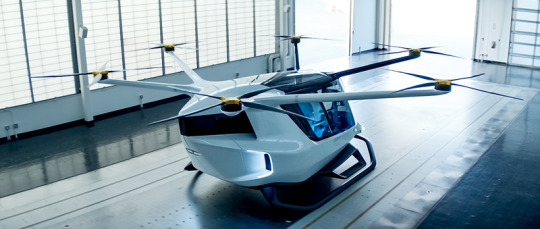
Skai Alaka'i Technologies Hopkinton, Massachusetts, USA. www.skai.co
Se pronostica que este nicho alcanzará 580 mil vehículos anuales en 2040. Empresas como Alaka'i y JetPack Aviation desarrollan prototipos de jets personales compactos impulsados por hidrógeno. La visión futura es que estos vehículos puedan estar al alcance de cualquier persona interesada en experiencias de vuelo personalizadas e innovadoras.
A pesar del entusiasmo por los vehículos aéreos eléctricos de pasajeros, su adopción masiva enfrenta desafíos. Los autos eléctricos terrestres ya tienen una infraestructura establecida de carriles, estaciones de carga y cadenas de suministro. La movilidad aérea urbana, por otro lado, debe resolver complejos rompecabezas regulatorios, de espacio aéreo, ruido y seguridad antes de materializarse.
El futuro de la movilidad aérea personalizada está despegando. Con innovadores vehículos eléctricos de despegue y aterrizaje vertical que transportan de 1 a 4 pasajeros, empresas visionarias lideran una revolución silenciosa y sostenible. Libres como pájaros, pronto cruzaremos ciudades abarrotadas pilotando nuestros propios taxis aéreos. El cielo es el límite para esta nueva era dorada de aviación personal.
¡Agárrate!
Gracias por leerme y compartir
@ptorresmx

2 notes
·
View notes
Text
Rear cars that you don't know !!!
These are Rear Cars that you might not hear about or seen. Read this article and please tell me in the comment which one is your favorite and what you like about it.
Peel P50: smallest car in the world

Peel P50: produced in the 1960s, it is only 3.5 feet tall, 8.5 feet long, and has a single door that opens upwards. It has only one seat and a gasoline engine.
Amphicar: a car that can float on water
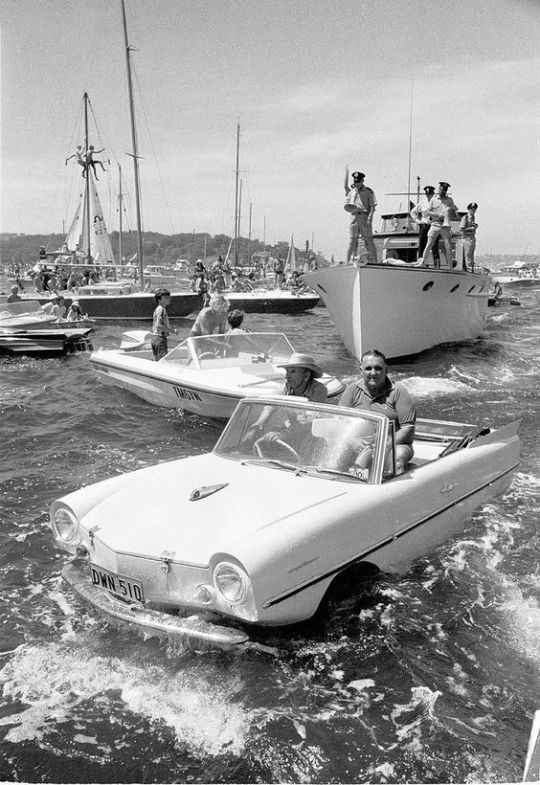
Amphicar: made in Germany from 1961 to 1968, it had a top speed of on the water of 7 knots and on the road of 70 mph.
Tatra T87: aerodynamically advanced car from Czechoslovakia
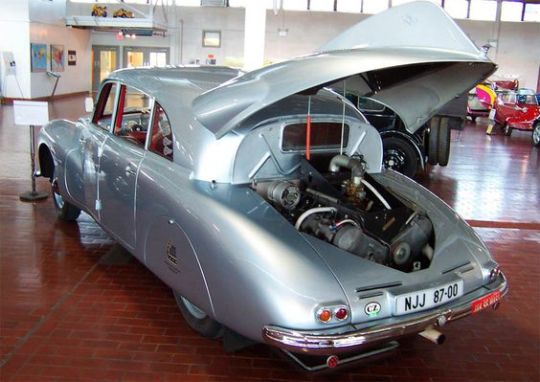
Tatra T87: produced from 1936 to 1950, had a rear-mounted air-cooled engine and streamlined body for improved fuel efficiency and stability.
Messerschmitt KR200: bubble car from 1950s Germany

Sinpar 4x4: developed in the 1970s, it was used by the French army for amphibious operations. It can drive on land, float on water, and has the ability to be airlifted by helicopter.
Terrafugia Transition: a flying car that can fold its wings for road use

Messerschmitt KR200: produced from 1955 to 1964, it was a bubble car with a canopy-style roof that enclosed the driver and passenger. It had a rear-mounted engine and a maximum speed of 60 mph.
Tata Nano: ultra-low-cost car from India

Tata Nano: produced from 2008 to 2018, it was marketed as the world's most affordable car. It had a starting price of $2,500 and was designed for India's growing middle class.
McLaren F1: a high-performance sports car with a three-seater layout

McLaren F1: produced from 1992 to 1998, it was one of the fastest and most technologically advanced cars of its time. It had a top speed of 240 mph and a 6.1-liter V12 engine.
Isetta: microcar with a single door that opens like a fridge.

Isetta: produced in the 1950s by several European manufacturers, it was known for its unique design that allowed the entire front of the car to open like a refrigerator door.
Reliant Robin: British three-wheeled car infamous for its tendency to roll over.
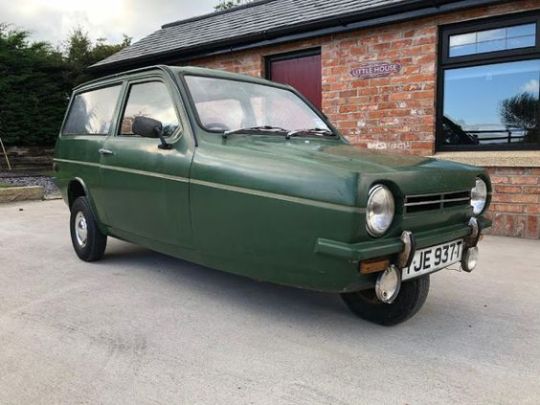
Reliant Robin: produced from 1973 to 2002, it was a three-wheeled car notorious for its instability and tendency to roll over, especially in strong winds.
Follow me on Reddit for exciting blogs:
8 notes
·
View notes
Text

TERRA FUGIA
by Joseph Whittington
.
Art from my YouTube video:
LIVE BETTER BUY ART
Here is the link:
https://www.youtube.com/watch?v=qP23TZc_FXo
.
Check out my ebay art at: https://www.ebay.com/usr/goteamphoto
.
My #tiktok
https://www.tiktok.com/@goteamphoto?l...
.
My YouTube:
https://www.youtube.com/channel/UCQk6...
.
#worldfamousartist #designer #josephwhittington #joewhittington #artistoftheyear #miami #goteamphoto @goteamphoto #livebetterbuyart #art #arte #kunst #изкуство #мастацтва #artea #শিল্প #İncəsənət #Արվեստ #فن #ስነጥበብ #arti #kuns #сәнғәте #artea #umjetnost #藝術 #艺术 #umění #אמנות #terrafugia
1 note
·
View note
Text
¡Descubre el futuro de la movilidad con el coche volador y la inteligencia artificial!

¡El futuro ha llegado! El coche volador y la inteligencia artificial se unen para revolucionar la forma en la que nos movemos. ¡Descubre cómo esta innovación está cambiando el mundo!
En los últimos años, hemos sido testigos de avances tecnológicos impresionantes que han transformado la forma en que nos desplazamos de un lugar a otro.
Desde la popularización de los vehículos eléctricos hasta la llegada de los coches autónomos, la industria automotriz ha experimentado una verdadera revolución. Sin embargo, hay un concepto que ha capturado la imaginación de muchos: el coche volador.
La idea de un coche que pueda despegar y aterrizar verticalmente, evitando por completo el tráfico terrestre, ha sido un sueño de la ciencia ficción durante décadas.
Pero gracias a los avances en tecnología de propulsión y control, este sueño se está convirtiendo en una realidad cada vez más cercana. Empresas como Uber, Airbus y Terrafugia están invirtiendo millones de dólares en el desarrollo de coches voladores, con la esperanza de que pronto podamos verlos surcando los cielos de nuestras ciudades.
Pero ¿qué papel juega la inteligencia artificial en todo esto? La respuesta es: un papel fundamental. Los coches voladores no solo necesitan ser capaces de despegar y aterrizar de forma segura, sino que también deben ser capaces de navegar de manera autónoma por el espacio aéreo, evitando obstáculos y tomando decisiones rápidas en caso de emergencia.
Es aquí donde entra en juego la inteligencia artificial, que permite a estos vehículos procesar grandes cantidades de datos en tiempo real y tomar decisiones informadas para garantizar la seguridad de los pasajeros y de quienes se encuentran en tierra.
Además, la inteligencia artificial también puede utilizarse para optimizar las rutas de vuelo, minimizando el consumo de energía y reduciendo las emisiones de carbono.
Al analizar datos en tiempo real sobre el tráfico aéreo, las condiciones meteorológicas y otros factores, los coches voladores pueden planificar la ruta más eficiente y segura para llegar a su destino, ahorrando tiempo y recursos en el proceso.
En conclusión, el coche volador y la inteligencia artificial representan una combinación poderosa que promete revolucionar el transporte del futuro.
A medida que estas tecnologías continúan avanzando y se vuelven más accesibles para el público en general, es probable que veamos un cambio radical en la forma en que nos desplazamos por nuestras ciudades.
Sin duda, estamos ante una nueva era de innovación y posibilidades ilimitadas. ¡El futuro ya está aquí!
https://ntv365.com/ciencia-y-tecnologia/microsoft-anuncia-la-creacion-de-un-centro-de-inteligencia-artificial/
Read the full article
0 notes
Text
Flying Car Prototypes: The Future of Personal Transportation Takes Flight
Welcome to the future of mobility! Imagine cruising above traffic, soaring through the skies in your very own flying car. It's not science fiction; it's the next frontier in personal transportation. Join us as we explore the incredible world of flying car prototypes.
1. Wikipedia Reference:
Get started with a reliable Wikipedia article on flying cars to understand their history, development, and potential impact.
2. The Dream of Flight:
Delve into humanity's age-old dream of personal flight and how flying cars are bringing that dream closer to reality.
3. Cutting-Edge Innovation:
Explore the groundbreaking technologies that power these prototypes, from vertical take-off and landing (VTOL) capabilities to advanced electric propulsion systems.
4. Visionary Manufacturers:
Meet the pioneering companies behind the prototypes, including names like Terrafugia, PAL-V, and AeroMobil.
5. Design and Functionality:
Discover the sleek and futuristic designs of these vehicles and learn how they transition from road to sky.
6. Practical Applications:
Understand the potential uses of flying cars, from easing traffic congestion in urban areas to enabling rapid medical transport.
7. Regulatory Challenges:
Explore the legal and safety hurdles that must be overcome before flying cars can become a common sight in our skies.
8. Environmental Benefits:
Learn how electric and hybrid flying car designs aim to reduce emissions and contribute to a more sustainable future.
9. Multimedia Showcase:
Immerse yourself in the world of flying cars with stunning images, informative videos, and interactive features.
10. The Road Ahead:
Gain insights into the challenges, milestones, and timelines for the mass adoption of flying cars.
11. Your Ticket to the Future:
While flying cars are still in the prototype stage, they represent an exciting shift in personal transportation. Explore the possibilities, learn about the companies driving this innovation, and envision a future where you can soar above it all.
12. Taking Flight Safely:
Understand the safety measures and regulations that will ensure flying cars become a reliable and secure mode of transportation.
13. The Future is Now:
Flying cars are no longer the stuff of science fiction. They are real, and they are taking off. Get ready to embrace a new era of personal mobility.
Flying car prototypes are not just a dream; they're a glimpse of the future. So, fasten your seatbelt (or maybe your wings) and join us on this exhilarating journey through the skies of innovation and possibility!
"Don't forget to bookmark our website for quick access to valuable resources."
0 notes
Text
🛩️ 😲 12 MÁQUINAS VOLADORAS del FUTURO que no te creerás [VÍDEO]

¿Alguna vez has soñado con las máquinas voladoras?
Pues bien, el futuro del transporte está aquí y es más emocionante que nunca.
En este vídeo, vamos a echar un vistazo a 12 vehículos para volar del futuro que no te creerás.
Desde aviones personales hasta drones autónomos, estos vehículos tienen el potencial de revolucionar la forma en que nos movemos.
¡Así que quédate hasta el final y prepárate para quedarte asombrado!
Te dejo el vídeo con 12 MÁQUINAS VOLADORAS del FUTURO que no te creerás:
https://youtu.be/XHCz4HEn-zg
Te puede interesar:
- ⛺ 17 INVENTOS para VACACIONES en el CAMPING que te interesan
- 🏎️ 12 CONCEPT CAR Increíbles con la TECNOLOGÍA que debes ver
⏯️ Contenido del Vídeo:
- 0:00 Introducción
- 0:28 Gove
- 1:10 XPENG X2
- 2:21 Terrafugia TF-X
- 3:22 AeroMobil
- 4:20 Airscooter
- 5:21 Airspeeder Crewed MK4
- 6:20 Alpha Jetman
- 7:21 Jetson ONE
- 8:27 MC One Personal eVTOL
- 9:27 Joby S4 eVTOL aircraft
- 10:32 Alef Model A
- 11:39 Bird of prey
Read the full article
0 notes
Text
🛩️ 😲 12 MÁQUINAS VOLADORAS del FUTURO que no te creerás [VÍDEO]

¿Alguna vez has soñado con las máquinas voladoras?
Pues bien, el futuro del transporte está aquí y es más emocionante que nunca.
En este vídeo, vamos a echar un vistazo a 12 vehículos para volar del futuro que no te creerás.
Desde aviones personales hasta drones autónomos, estos vehículos tienen el potencial de revolucionar la forma en que nos movemos.
¡Así que quédate hasta el final y prepárate para quedarte asombrado!
Te dejo el vídeo con 12 MÁQUINAS VOLADORAS del FUTURO que no te creerás:
https://youtu.be/XHCz4HEn-zg
Te puede interesar:
- ⛺ 17 INVENTOS para VACACIONES en el CAMPING que te interesan
- 🏎️ 12 CONCEPT CAR Increíbles con la TECNOLOGÍA que debes ver
⏯️ Contenido del Vídeo:
- 0:00 Introducción
- 0:28 Gove
- 1:10 XPENG X2
- 2:21 Terrafugia TF-X
- 3:22 AeroMobil
- 4:20 Airscooter
- 5:21 Airspeeder Crewed MK4
- 6:20 Alpha Jetman
- 7:21 Jetson ONE
- 8:27 MC One Personal eVTOL
- 9:27 Joby S4 eVTOL aircraft
- 10:32 Alef Model A
- 11:39 Bird of prey
Read the full article
0 notes
Text
Air Taxi Market Demand, Share, Forecast 2022-2028
BlueWeave Consulting, a leading strategic consulting and market research firm, in its recent study, estimated Global Air Taxi Market size at USD 763.81 million in 2021. During the forecast period between 2022 and 2028, BlueWeave expects the global air taxi market size to grow at a high CAGR of 34.1% reaching a value of USD 5,735.1 million by 2028. Major growth factors for global air taxi market include spurring demand for an alternate method of transportation due to road traffic congestion; increasing government efforts around the world; growing investments by major aviation companies; increased activities in research, development, and innovations; and favorable impact of various startups and top players on the development of several types of air taxis.
Air Taxi – Overview
An air taxi is a type of aircraft with well-organized operations and is designed to cover short distances. In 2001, NASA and the aerospace industry first proposed the idea of an air taxi in a study on the prospective Small Aircraft Transportation System (SATS) and the expansion of light-jet aircraft manufacture in the United States. Later, as the number of automobiles on the road expanded, so did traffic congestion, and the demand for a better and more efficient transportation system grew, resulting in greater demand for air taxis around the world. Several companies in the aviation and transportation industries collaborated on the development of an air taxi that will be used all over the world.
Global Air Taxi Market – Technology Advancements
With the emergence of innovative transportation technologies, such as railway and automobile automation, demand for an alternate method of transportation has risen around the world. As a result, aviation corporations are concentrating their efforts on introducing air taxis across the globe. Various collaborations have been formed among companies to discover new concepts for the development of air taxis. For example, Airbus S.A.S. announced the CityAirbus electric air taxi, which can take off and land vertically, as well as other innovations, such as the full-scale flight test of VAHANA, the all-electric, self-piloted, and VTOL aircraft. These developments are driven by the need for alternative modes of transportation, which will result in market growth during the forecast period. Governments’ initiatives and incentives for the adoption of air taxis could provide multiple growth opportunities for the global air taxi during the period in analysis. However, hefty differential fares and strict aircraft license regulations could limit the market growth.
Request for Sample Report @ https://www.blueweaveconsulting.com/report/air-taxi-market/report-sample
Global Air Taxi Market - Regional Analysis
Due to a high focus and increasing investments by the United States and Canada in developing alternate traffic system to ease their heavily congested road traffic, North America could dominate the global air taxi market by region. Los Angeles, for example, was named one of the top cities with the most traffic congestion. Similarly, London is one of Europe's most congested cities, with drivers spending an average of 72 hours a year stuck in traffic. As a result, Uber has stated that it would start its air taxi service in some of the country's most congested areas, including Los Angeles, by 2023. As the home to major emerging economies, such as China and India, the Asia-Pacific air taxi market is forecast to record growth at a significant CAGR during the period in analysis. Rising disposable income, increased traffic congestion, and a growing preference for speedier modes of transportation, China, India, and Japan have enormous growth potential.
Competitive Landscape
Prominent players in global air taxi market include AeroMobile, Airbus S.A.S., Beechcraft Corporation, Boeing, Cessna, Dassault Aviation SA, EHANG, Embraer, Gulfstream, Hyundai, Joby Aviation, Kittyhawk, Lilium, Opener, TERRAFUGIA, Uber’s VTOL, and Volocopter GmbH. These companies are concentrating on developing technologies and software to ensure that the air taxi sector runs well. For example, Uber teamed up with NASA and revealed ambitions to develop software to manage air taxi routes and avoid traffic congestion. Meanwhile, China's Ehang 184 was tested in Dubai. It does, however, require an aviation license. Such initiatives are projected to boost the demand for air taxi services in the coming years.
About Us
BlueWeave Consulting provides comprehensive Market Intelligence (MI) Solutions to businesses regarding various products and services online and offline. We offer all-inclusive market research reports by analyzing both qualitative and quantitative data to boost the performance of your business solutions. BWC has built its reputation from the scratch by delivering quality inputs and nourishing long-lasting relationships with its clients. We are one of the promising digital MI solutions companies providing agile assistance to make your business endeavors successful.
Contact Us:
BlueWeave Consulting & Research Pvt. Ltd
+1 866 658 6826 | +1 425 320 4776 | +44 1865 60 0662
0 notes
Text
Terrafugia TF-2
July 19th 2020
8 notes
·
View notes
Video
youtube
The Terrafugia TF-X is an autonomous flying car under development by Boston-based Terrafugia. Its expected release date is listed as eight to twelve years.
1 note
·
View note
Video
instagram
Driven to Fly The World's First Flying Car . . Reposted from @firm400 . . #TechThursday - Volvo's Parent Company Geely Acquired The Purchase Of Flying Car Start-Up Terrafugia Last Year. Now In 2018, Terrafugia Is Set To Launch The World's First Flying Car, The TF-X No Later Than By 2019. . . #volvo #geely #terrafugia #tfx #terrafugiatfx #startup #firm400 #thefuture #flyingcar #cars #2018 #2019 #southerncalifornialifestyle #videooftheday - #regrann https://www.instagram.com/p/BwpVR_8gT4K/?utm_source=ig_tumblr_share&igshid=sl1i3ipc5ymy
#techthursday#volvo#geely#terrafugia#tfx#terrafugiatfx#startup#firm400#thefuture#flyingcar#cars#2018#2019#southerncalifornialifestyle#videooftheday#regrann
1 note
·
View note
Photo



Flying car developer Terrafugia has been bought by Zhejiang Geely Holding Group, parent of Chinese carmaker Geely with the ambition of bringing their flying car to life. Geely hope to bring a flying car to market by 2019, 2 years earlier than Massachusetts-based Terrafugia had originally planned
616 notes
·
View notes
Text
दुनिया की पहली फ्लाइंग कार जिसे सड़क पर भी चला सकेंगे, 10 हजार फीट पर उड़ती है 161 किमी प्रति घंटा की रफ्तार से
दुनिया की पहली फ्लाइंग कार जिसे सड़क पर भी चला सकेंगे, 10 हजार फीट पर उड़ती है 161 किमी प्रति घंटा की रफ्तार से
पढ़ें अमर उजाला ई-पेपर कहीं भी, कभी भी।
*Yearly subscription for just ₹299 Limited Period Offer. HURRY UP!
ख़बर सुनें
ख़बर सुनें
फ्लाइंग कार का सपने जल्द ही हकीकत में तब्दील होने वाला है। अमेरिका की फेडरल एविएशन एडमिनिस्ट्रेशन (एफएए) ने एक हाइब्रिड ग्राउंड-एयर व्हीकल को मंजूरी दे दी है। दो सीटों वाली यह फ्लाइंग कार 100 मील प्रति घंटे (यानी 161 किलोमीटर प्रति घंटा) की रफ्तार से उड़ान भर सकती…

View On WordPress
#Auto News in Hindi#automobile#automobile news#Flying car#flying car - terrafugia transition street-legal aircraft#flying vehicles#gaadi meri saathi#how much does a terrafugia cost#latest auto news#latest auto news hindi#Latest Auto News Updates#latest automobile news#terrafugia#terrafugia flying car price in india#terrafugia tf-x#terrafugia tf-x release date#terrafugia transition#terrafugia transition aircraft#terrafugia transition cost#terrafugia transition flying car#terrafugia transition launch date#terrafugia transition price#terrafugia transition release date#Terrafugia transition roadable aircraft#transition flying car price#zindagi jaari hai
0 notes
Text
Registering Your Flying Car In New Hampshire Is Easy Thanks To The ‘Jetson Bill’
Registering Your Flying Car In New Hampshire Is Easy Thanks To The ‘Jetson Bill’
[ad_1]

New Hampshire has just made it relatively easy to register your Samson Switchblade – or other flying … [+] car – for the road in hopes that early adopters and roadable aircraft makers will come to the state.
Samson Sky
The dream of the “flying car” has captured public imagination since the post WWII era but it has always been checked by reality. Flying isn’t the same as driving…
View On WordPress
#Bill#Car#easy#flying#Flying Car#Hampshire#Jetson#New Hampshire#PAL-V#Registering#Samson Switchblade#Terrafugia#Urban Air Mobility
0 notes
Photo

Oshkosh – Wing Folding Demo At EAA AirVenture Oshkosh 2018, Terrafugia's booth attendees were able to witness demonstrations of the Transition wings folding and unfolding.
0 notes